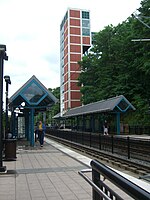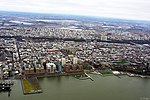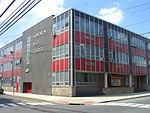Saint Ann Roman Catholic Church and Rectory
Brick buildings and structuresChurches in Hoboken, New JerseyChurches on the National Register of Historic Places in New JerseyNational Register of Historic Places in Hudson County, New JerseyNew Jersey Register of Historic Places ... and 3 more
Renaissance Revival architecture in New JerseyRoman Catholic churches completed in 1927Roman Catholic churches in New Jersey

The Saint Ann Roman Catholic Church and Rectory is located at 704 Jefferson Street in the City of Hoboken in Hudson County, New Jersey. It was constructed during the tenure of Rev. Michael Gori, who was pastor of the parish from 1921 to 1937. It was added to the National Register of Historic Places on November 24, 2015, for its significance in architecture, religion, and ethnic heritage from 1925 to 1949.
Excerpt from the Wikipedia article Saint Ann Roman Catholic Church and Rectory (License: CC BY-SA 3.0, Authors, Images).Saint Ann Roman Catholic Church and Rectory
Jefferson Street,
Geographical coordinates (GPS) Address Nearby Places Show on map
Geographical coordinates (GPS)
| Latitude | Longitude |
|---|---|
| N 40.746111111111 ° | E -74.036111111111 ° |
Address
Jefferson Street 701
07030
New Jersey, United States
Open on Google Maps











